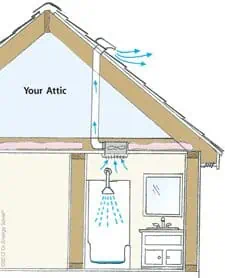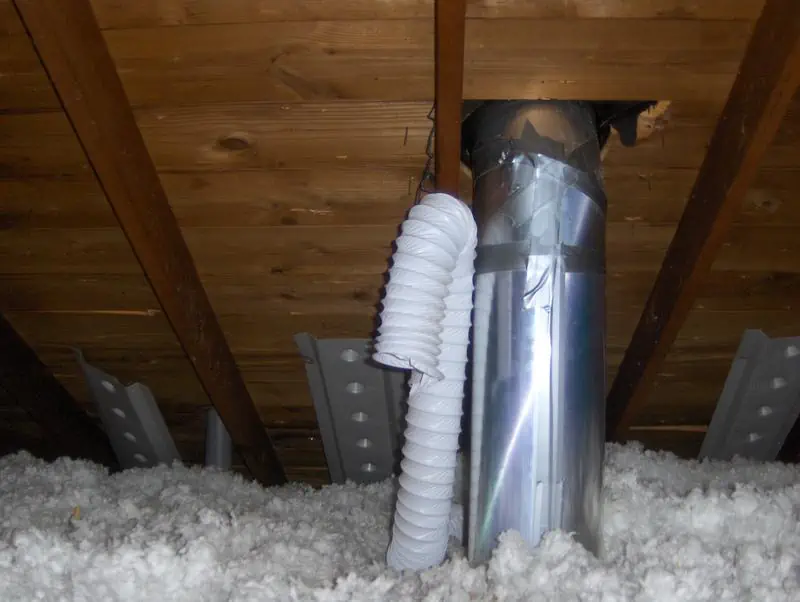If you use an exhaust fan in your bathroom, you are trying to reduce the moisture build-up in your home from taking a shower. But do you know where that wet, warm air gets pushed? We find dozens of issues related to this very problem: disconnected, broken or improperly installed exhaust fans from bathrooms can cause costly problems for you down the road.
Venting Directly to the Attic
This is one of the biggest problems. The exhaust fans are not meant to vent directly to the attic space. This is horrible for the attic – it’s bringing in exactly what you are trying to avoid, excess heat and water! If you don’t have a duct running from your exhaust fan to a vent stack on the roof and it’s just laying on the attic insulation, you have got to get this repaired as soon as possible, or you could be creating a MAJOR mold issue for yourself.
Broken or Disconnected Ductwork
This is more common, but the end result is the same. You are pumping your wet, warm air from the bathroom right into the attic. This contributes to wet insulation, causing it not work properly and a host of mold and mildew problems. Repair your duct and get it connected properly to a vent stack as soon as possible.
Missing Bathroom Exhaust Fan
If your bathroom does not have an exhaust fan, hopefully there is a window or other means by which to exhaust excess moisture and heat. At least ensure that the bathroom does not naturally ventilate into the attic via a cold air return in any manner. Investigate having a proper exhaust fan and ductwork installed to ensure you remove as much moisture from your home as possible.

How to do it the right way
Consider using insulated ductwork to reduce any condensation that might occur on the inside or outside as a result of the large difference in temperature.
Smooth ductwork and or PVC is best to avoid cracks and crevices where anything can build up over time.
Reduce the amount of bends and turns that the air has to take in order to get outside so the fan doesn’t have to overcome any unnecessary pressure restrictions.
If you are venting through a roof, be sure to consult a roofing company to ensure correct installation. Check building codes and seek professional guidance for your area to ensure proper compliance.
Consider a fan with a humidistat or a timer to allow your bathroom to continue venting for 15 minutes following a shower or until the water vapor is down to a certain level.
If you have any home improvement questions and would like to schedule an appointment, call the Pros at 888-776-1998 or visit our estimate page by clicking here.

